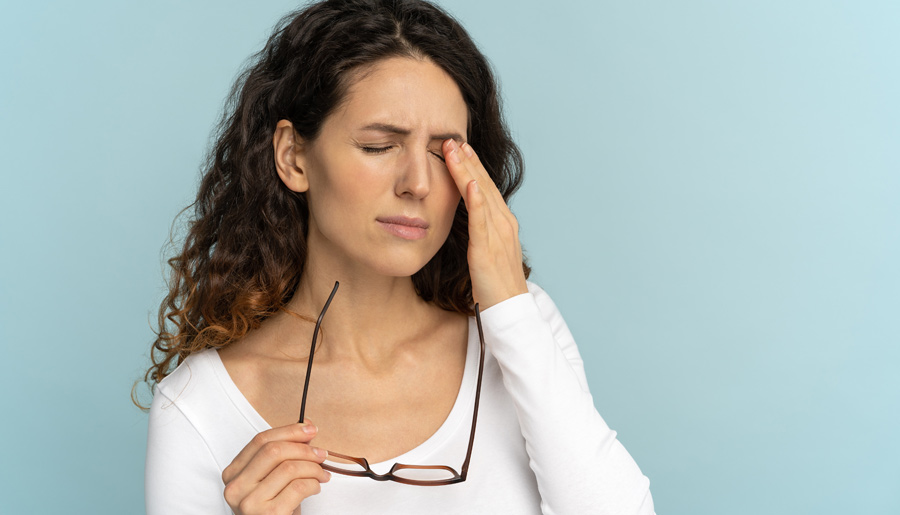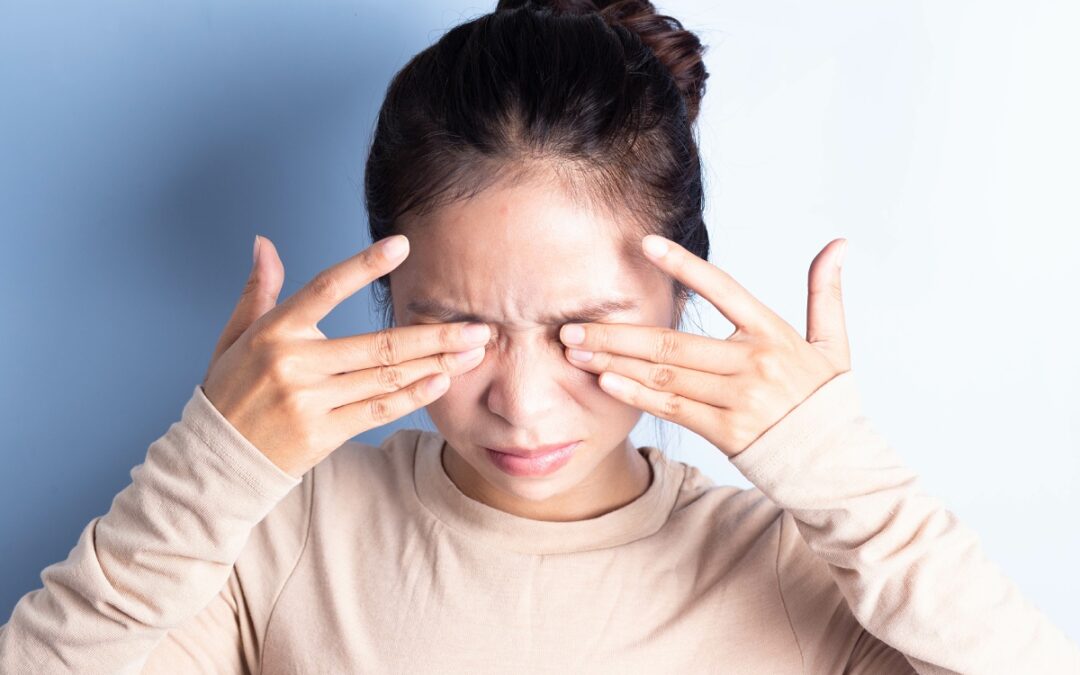Dry eye disease is a condition caused by inadequate tear production or excessive tear evaporation. It can be uncomfortable and sometimes even painful, leading to blurred vision and general eye discomfort. If left untreated, dry eyes can cause serious damage to the eye surface.
Fortunately, our eye doctors in Gonzales offer a safe, effective treatment option for dry eye disease due to meibomian gland dysfunction (MGD)—the most common cause of dry eye symptoms. Keep reading to learn more about dry eye disease and how OptiLight therapy can help alleviate symptoms.
Symptoms of dry eye disease
The most common symptom of dry eye disease is a feeling of grittiness or sand in the eyes. Other symptoms include:
- Redness
- Watery eyes
- A burning or stinging sensation
- Blurred vision
- Light sensitivity
- Excessive tearing
If you suffer from any of these symptoms, it’s important to speak with your doctor right away so they can diagnose the cause and provide appropriate treatment.
Top causes of dry eye disease
There are several potential causes of dry eye disease; however, some are more common than others. The most common cause is meibomian gland dysfunction (MGD), which occurs when the meibomian glands become blocked or clogged due to inflammation or other factors. These glands secrete an oil that coats the surface of the eye and keeps tears from drying out or evaporating too quickly. When the glands malfunction or get clogged, they can’t produce this oil, leading to dry eye symptoms because tears evaporate too quickly.
Aging also plays a role in the development of dry eye disease since our bodies produce fewer tears as we age. Other potential causes include certain medications such as antihistamines or decongestants, environmental conditions like windy weather or air conditioning, and some diseases like diabetes or rheumatoid arthritis.
Diagnosing dry eye disease
The first step to diagnosing dry eye is to get an eye exam. During the exam, your eye doctor will examine your vision and overall eye health, looking for early signs of eye diseases and other conditions. If dry eye is suspected, they will conduct other tests to rule out other possible causes. Tests include determining your tear volume, measuring how quickly your tear film evaporates, and evaluating the redness of your eyes. If you are diagnosed with dry eye, they will develop a customized treatment plan to meet your unique needs.
Treating dry eye disease
At Accent Vision Care in Gonzales, we offer an innovative in-office treatment called OptiLight to treat dry eye symptoms caused by MGD. OptiLight by Lumenis is the first and only FDA-approved intense pulsed light (IPL) therapy for the treatment of dry eye. This treatment uses infrared light technology to unclog blocked meibomian glands and increase oil production in the eye area. It helps restore tear film balance and improves comfort levels for people suffering from dry eye symptoms due to MGD.
OptiLight is a quick, gentle, non-invasive procedure with sessions taking only 10-15 minutes. It has proven to be very effective in alleviating dry eye symptoms related to MGD—without any side effects and with minimal discomfort.
If you suffer from dry eye disease, it’s important to talk to your eye doctor about potential treatments such as OptiLight therapy that can help alleviate the uncomfortable symptoms. With its non-invasive approach and proven success rate, OptiLight therapy may be the perfect solution for restoring tear film balance and reducing dryness in your eyes safely and effectively! Schedule an eye exam at Accent Vision Care and ask our doctors if OptiLight treatment is right for you.





